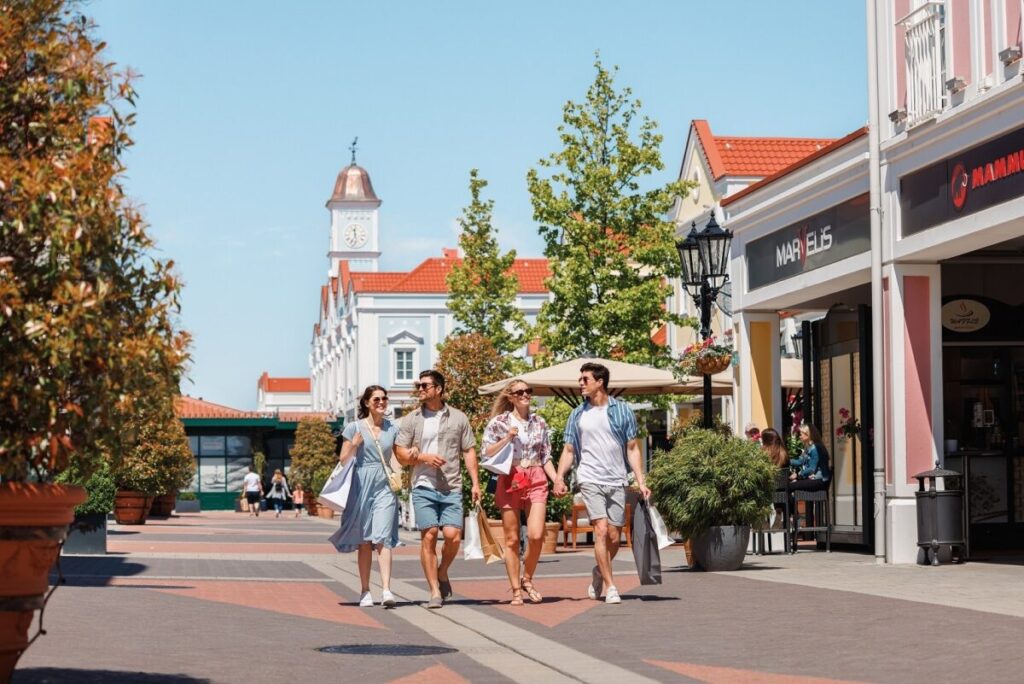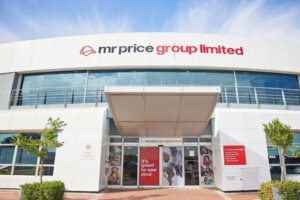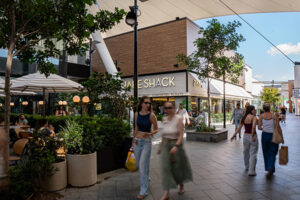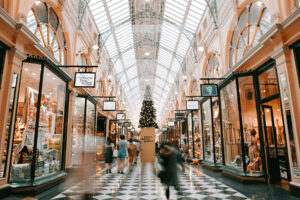In the 1930’s, “factory stores” first emerged, with the primary purpose of selling slightly damaged or excess goods at a discount, first and foremost to employees and their families. The stores were often located close to the factory itself. This was the case up until the 70’s, when the first multi-store “factory outlet” opened in the US, reaching a much larger audience as they included many brands. The concept popped up in Europe much later, and while some instances are found in the 70’s, it really did not become popular in Europe until the 80’s-90’s.
While outlet stores still sell excess inventory and discontinued items, malls have since evolved. Many have become vibrant shopping destinations offering a wide range of brands and appealing to all demographics. And since the concept of fast-fashion is here to stay, outlets can also offer in-season merchandise, increasing their appeal and reach across demographics.
In Europe, there is a greater propensity for high-end luxury outlets. Many luxury brands have their base in Europe, and it is interesting to observe how designer outlets represent a cultural shift. It was not so uncommon in the past for high-end brands to burn excess inventory, but luxury outlet malls offer a way to dispose of excess inventory in a controlled manner. In these types of malls, the environment attempts to be experienced-based and sometimes emulates an upscale lifestyle center. The Designer Outlet Parndorf in Austria is such an example.

Maximizing success at outlet malls
Outlet malls have long been a staple for shoppers looking for great deals on brand-name items. Especially given today’s inflationary pressures, outlet shopping is very attractive for many. However, as consumer preferences and retail landscapes evolve, outlet malls must adapt to stay relevant and competitive. One key strategy for success lies in leveraging emerging trends to enhance the shopping experience and drive customer engagement and loyalty.
While it is commonly thought that discounts of up to 70% on brand names is enough to pull shoppers to the malls, the increase in online shopping (boosted by the pandemic), has forced outlet centers to rethink their strategies. Knowing more about the shoppers that frequent their mall and analyzing the results from marketing efforts is essential and is achieved by a data-driven and target-oriented approach to all their digital initiatives.
The above-mentioned property in Austria is operated by McArthurGlen. They keep customers coming back through the McArthurGlen Club which provides members with additional discounts and benefits, all the while gathering important information that will help with both marketing efforts and further development of their centers.
Knowing your shopper base is not a strategy just for certain segments of shopping centers! With the tools available today, it is not only possible for regional and lifestyle centers to take a leap into the digital age, but also outlet centers should invest in technology and digital strategies – with the possibility to increase footfall, spend, frequency and time spent. This can be through events, gamification, rewards and incentives driven digitally, with the outcome of fostering loyalty and encouraging shoppers to return. The technology driving this provides valuable data insights that can be used to tailor marketing efforts and enhance the overall shopping experience.
Finally, our experience has been that the pull to the outlets has traditionally been driven by the brands themselves: I want some Nike work-out clothes, so I will go to the outlet center to get a good deal. It is not normally a space where one goes to spend a day strolling around – the stores are the destinations. The bond between the retailers and management is even more crucial, and we often observe that this collaboration is stronger than in traditional mall settings. Combined and correlated marketing efforts and smooth tenant-management relationships is a formula for success.

Future-forward
Outlet centers are here to stay but are operating and planning more and more like a traditional shopping center. The forward-thinking, innovative malls are considering:
- Omni-channel experiences that offer a seamless shopping experience on- and offline. This might include online reservations for in-store pickups, VR shopping assistants and of course integrating loyalty programs across both channels.
- Sustainability which is tricky for outlet centers which seemingly promotes hyper-consumerism. They will need to respond by incorporating sustainable practices such as eco-friendly materials in construction, implementing recycling programs, and partnering with sustainable brands.
- Experiential retail to increase their customer base – outlet centers need to transform into destinations that offer more than just shopping. This includes adding entertainment options such as cinemas, arcades, and restaurants, as well as hosting events like concerts and art exhibitions.
- Personalization in their digital strategies and with the help of data analytics. As mentioned previously, this might mean offering personalized recommendations, targeted promotions based on shopping behavior, and/or customized loyalty programs.
- Stellar websites to ensure all touchpoints of the customer journey are aligned and give a seamless experience. The first impression a modern, interactive website offers should not be underestimated. A standout site entices and excites and brings traffic to the mall.
- Community engagement is becoming more important, despite the traditional thought that such centers do not have a natural catchment area. Innovative outlet malls are increasingly becoming community hubs, hosting local events, partnering with local businesses, and supporting local charities, to create a sense of belonging and loyalty among repeat customers.
- Luxury/Designer outlets are much more prevalent in Europe, with more high-end brands opening outlet stores. This trend is driven by the increasing demand for affordable luxury goods and the success of luxury outlet malls in attracting both local and international shoppers.
ACROSS has featured outlet malls in several issues. The allure of outlets, even before inflation started to be an issue in Europe, is great. Given the current economy, it will be an interesting space to follow. And with further investments in technology, digital strategies and data-driven analytics, the outlook for outlets is very positive.







